Table of Contents
ToggleIn a world where distractions lurk around every corner, keeping track of tasks can feel like herding cats. Fear not! With a few easy tracking tips, anyone can transform chaos into a well-oiled machine. Whether it’s managing daily chores, projects, or even that elusive sock that always disappears in the laundry, these tips will make tracking feel less like a chore and more like a game.
Overview of Easy Tracking Tips
Effective tracking simplifies task management and enhances organization. Implementing straightforward strategies allows individuals to navigate through complex responsibilities. Prioritizing tasks helps ensure critical items get attention first. Using digital tools like apps and software streamlines the process. Paper planners also serve as effective alternatives for those who prefer traditional methods.
Color-coding tasks offers visual cues, making it easier to distinguish between different categories. Setting specific deadlines creates a sense of urgency, which prompts action. Breaking down larger projects into smaller, manageable steps reduces overwhelm. Regularly reviewing progress keeps individuals motivated and accountable.
Checking off completed tasks provides a satisfying sense of accomplishment. Adopting daily or weekly planners enables better visibility of responsibilities. Sharing tasks with team members increases accountability and encourages collaboration. Establishing a routine reinforces habits, ensuring tasks get completed consistently.
Integrating reminders into phone calendars helps individuals stay on track. Prioritizing tasks by importance versus urgency allows for smarter decision-making. Utilizing checklists ensures nothing is overlooked during busy days. Simplifying the process of tracking tasks fosters productivity and minimizes stress. By establishing these easy tracking tips, individuals gain clarity and control over their daily activities.
Benefits of Easy Tracking
Easy tracking improves overall organization and efficiency. By utilizing streamlined methods, individuals can gain more control over their tasks.
Improved Time Management
Effective time management results from prioritizing responsibilities. Tools like digital planners allow users to visualize tasks in a clear manner. This approach enables prioritization, ensuring high-impact items receive immediate attention. Daily reviews facilitate an understanding of time allocation and highlight areas for improvement. Individuals who implement these tracking techniques often discover additional time for personal or professional activities, ultimately fostering a better work-life balance.
Enhanced Productivity
Enhanced productivity is a key benefit derived from effective tracking. Breaking tasks into smaller, manageable components allows for quicker completion. Each completed item boosts motivation and momentum, fueling progress throughout the day. Additionally, integrating reminders ensures that important deadlines are not overlooked. Engaging with progress checks cultivates accountability and commitment. Utilizing tracking methods consistently transforms routine work into a more productive venture, leading to greater accomplishments.
Tools for Easy Tracking
Effective tracking relies on using the right tools. Several options exist that enhance organization and improve productivity.
Mobile Applications
Using mobile applications simplifies task management. Numerous apps like Todoist and Trello enable users to create, prioritize, and organize tasks effortlessly. Notifications remind individuals of deadlines, ensuring important tasks aren’t overlooked. Color-coded lists allow for quick visual recognition of priorities, supporting efficient decision-making. Collaborative features in these apps make task sharing with team members seamless, promoting accountability. Many of these applications integrate with calendars, helping users synchronize their schedules. The convenience of having access to tasks on-the-go empowers individuals to adjust plans as needed, keeping their workflow uninterrupted.
Digital Spreadsheets
Digital spreadsheets provide a flexible way to track tasks and projects. Programs like Microsoft Excel and Google Sheets offer customizable templates that users can modify according to their needs. Rows and columns allow for categorizing tasks by priority, status, or deadlines. Formulas help automate calculations, making it easier to manage project timelines and track progress. Sorting functions enable quick adjustments based on changing priorities, helping users maintain focus on what matters most. Additionally, sharing capabilities facilitate collaboration with team members, enhancing collective productivity. Regular updates to spreadsheets keep everyone informed and aligned, supporting a cohesive workflow.
Methods for Easy Tracking
Effective tracking methods enhance organization and optimize productivity. Utilizing various techniques can simplify task management and improve focus.
Visual Tracking Techniques
Color-coding tasks provides immediate visual cues. Individuals can assign different colors to categories, enhancing clarity. Creating charts or graphs allows for quick progress assessment. Visual boards, such as Kanban boards, facilitate task movement between stages. Using sticky notes can help visualize tasks in a dynamic way, allowing for quick adjustments. Regularly updating visual trackers keeps teams aligned and motivated.
Daily Journaling
Maintaining a daily journal fosters reflection on tasks and priorities. Writing down daily goals clarifies focus for the day. Recording completed tasks encourages accountability and motivation. Individuals can analyze patterns in productivity through reflective entries. Adjusting strategies based on these reflections promotes continuous improvement. Evaluating feelings about tasks helps in identifying opportunities for enhancement. Journaling transforms task management into a more insightful experience.
Implementing easy tracking tips can significantly enhance one’s ability to manage tasks and responsibilities. By prioritizing effectively and utilizing digital tools or planners, individuals can streamline their workflow and reduce stress.
Color-coding tasks and breaking projects into smaller steps not only makes the process more engaging but also fosters a sense of accomplishment. Regular reviews and progress checks create accountability and motivation, turning daily routines into productive ventures.
With the right strategies in place, anyone can gain clarity and control over their tasks, leading to improved organization and efficiency. Embracing these methods transforms task management into a rewarding experience, ultimately paving the way for greater success and balance in both personal and professional life.





